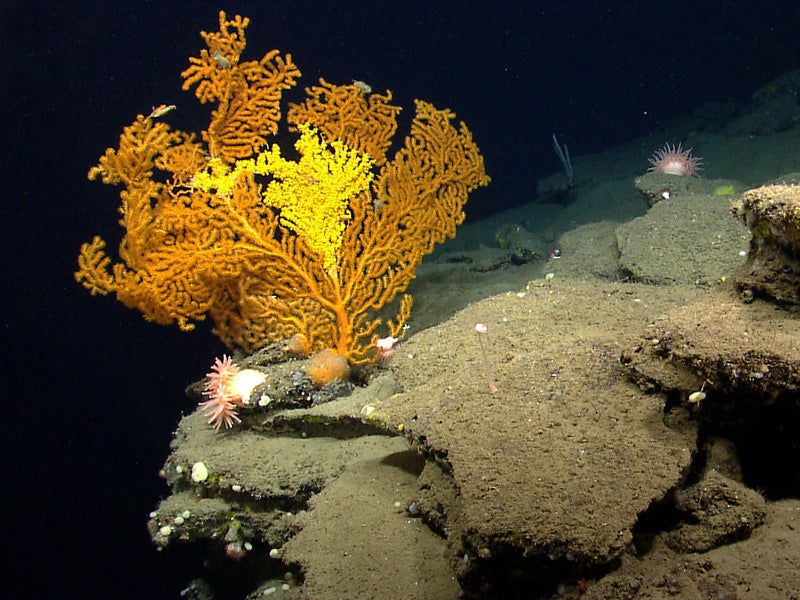Council Creates a Coastal Safe Haven for Atlantic Deep-Sea Corals
The Mid-Atlantic Fishery Management Council has voted to create the largest marine protected area on the East Coast, providing critical shelter for fragile coral ecosystems.

This page was published 8 years ago. Find the latest on Earthjustice’s work.
The Mid-Atlantic Fishery Management Council voted this week to create the largest protected area on the East Coast of the U.S.—a 38,000-square-mile expanse that runs along the coast from Virginia to New York. Here, the ocean floor is riddled with canyons that burrow thousands of feet into the Earth’s crust, providing shelter for fragile coral ecosystems.
Deep-sea corals offer essential habitats in the deep crags of the ocean floor. Bubblegum coral forms densely packed masses that can grow several yards tall, while Primnoa corals, sometimes called sea fans, branch out in ethereal tendrils.
In the nooks and crannies of these corals swim unusual creatures like blackbelly rosefish, long-nosed chimeras and deep-sea squid. Together these species live in a delicate balance that can easily be disturbed if coral is toppled or broken by fishing gear.
Once at risk from deep-sea fishing practices like bottom trawling and longlining, these organisms have now been given a chance to thrive. Within protected zones, fishermen won’t be permitted to use certain fishing gear, such as trawls, dredges, and bottom longlines. This gear can harm brittle deep-sea corals, which grow slowly and can take centuries to recover from damage.
Earthjustice has long fought to end overfishing, limit the use of harmful fishing gear like bottom trawls and dredges, and protect critical habitat for overfished and threatened species by helping establish marine protected zones.These most recent protections are the result of years of advocacy by Earthjustice and our partners to convince the council to take this step. The unique undersea world protected by this week’s decision is one part of a vast expanse of deep-sea corals and coral reefs threatened by overfishing, habitat destruction and climate change.
The Mid-Atlantic Council worked with scientists, conservationists, and eventually some fishing industry leaders to create 15 discrete protected zones around deep-water canyons and slopes along the edge of the continental shelf—areas that contain the vast majority of the area’s coral diversity. The council also voted to establish a “broad coral zone” around a much larger expanse, protecting all areas deeper than 450 meters. Together, these regulations protect a range roughly the size of Virginia.
Due to the patchwork nature of ocean regulations, restrictions don’t yet apply to the red-crab or lobster fishing industries, which involve fishing with traps, and do not block oil or gas drilling, the laying of underwater cables or other similar activities. However, the council’s decision is a big step forward for the protection of these rare cold-water corals and sets a new precedent for future large-scale ocean conservation.
From 2015–2017, Caeleigh MacNeil was part of the Editorial team at Headquarters in San Francisco. She is a graduate of Duke University, where she studied English, journalism and environmental science.
Earthjustice’s Oceans Program uses the power of the law to safeguard imperiled marine life, reform fisheries management, stop the expansion of offshore oil and gas drilling, and increase the resiliency of ocean ecosystems to climate change.
